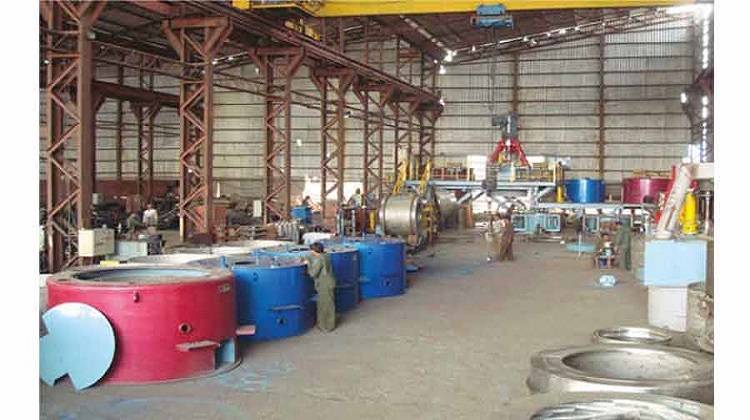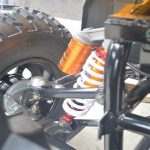Centrifuges are ordinary, daily equipment used in laboratories. But sometimes it might be difficult to choose the right centrifuge and rotor system for a particular application. A thorough grasp of centrifugation needs is necessary to comprehend the available various rotor types and the applications that they are best suited for.
Furthermore, it is crucial to offer the appropriate degree of rotor care and maintenance because rotors represent a considerable investment for the laboratory. So industrial centrifuge machine manufacturer is an important instrument.
The many centrifuge rotor types and the applications they are made to support are examined in this article. The safety of the laboratory staff using these devices as well as the maximum performance and durability of the rotors are guaranteed by following the proper rotor maintenance protocols.
Three different kinds of a centrifuge rotor
Swinging-bucket, fixed-angle, and vertical centrifuge rotors are the three types available. Three important elements are addressed by each category: 1) speed, 2) volume range and 3) centrifugation type (differential, rate-zonal, or isopycnic).
For tabletop, low-speed, and high-speed floor-model centrifuge applications, fixed-angle and swinging-bucket rotors are the most popular types to choose from among these groups. Ultracentrifugation is the primary use for vertical rotors.
A variety of materials, such as titanium, carbon fibre, and aluminium, can be used to create rotors. Every material has unique properties that make them suitable for various purposes. Later in this post, we will discuss how to choose and maintain the various rotor materials.
rotating buckets that swing
Swinging-bucket rotors are the best choice for slow, large-volume sample separation (up to 12 L). The components of a swinging-bucket rotor system are as follows: The buckets are supported by four or six arms on the rotor body, which is attached to the centrifuge drive. The buckets are put onto the arms of the rotor body, and trunnion pins are used to secure them.
A swinging-bucket rotor generally accommodates sample sizes from 36 mL to 2.2 mL for ultracentrifuge applications (adapters are not normally used). Two types of separations can be supported by an ultracentrifuge with a swinging-bucket rotor: rate-zonal (i.e., depending on mass or size) and isopycnic (i.e., based on density).
A swinging-bucket rotor is ideal for rate-zonal separations because the gradient’s pathlength, or the distance from Rmin [within the top of the meniscus] to Rmax [outside the bottom of the tube], is sufficient for separation to take place.
Additionally, the sample maintains its orientation throughout the run since the buckets are positioned at 90 degrees and then restored to a vertical position at the end of the test, minimising any disruption to the pellet or band.
Rotors with fixed angles
The most common kind of rotors used in centrifugation is fixed-angle rotors. Most are used for simple pelleting applications (differential separations), either to collect the pellet or to pellet particles from a solution and remove any extra detritus. These rotors’ cavities range in size from 0.2 mL to 1 L, and their speeds range from zero to 1,000,000 g. (relative centrifugal force, RCF).
The needed fixed-angle rotor’s type depends on the desired g-force (RCF) and desired volume. In general, the rotor’s capacity for maximum speed is inversely proportionate to its size (i.e., the larger the rotor, the lower the maximum speed).
The K factor, which represents the rotor’s pelleting effectiveness at peak speed while accounting for the maximum and minimum radius (pathlength) of the rotor cavity, is a crucial criterion when choosing a fixed-angle rotor. The K factor can be a helpful parameter for evaluating the speed at which particles will pellet over a variety of rotors since a low K factor suggests a better pelleting efficiency.
Horizontal rotors
In ultracentrifugation for isopycnic separations, particularly for the banding of DNA in caesium chloride, vertical rotors are used most often. The particles will orient inside this region of the gradient because, in this kind of separation, the density range of the solution has the same density as the target particle.
Run time, which must be enough for the particles to orient at the correct place inside the gradient, determines isopycnic separations rather than the gradient’s path length. Run time is reduced because vertical rotors have very low K factors (usually between 5 and 25), which indicate that the particle only needs to travel a short distance to the pellet (or, in this case, form a band).
Volume and speed become the determining variables for which rotor to utilise once it has been established that a vertical rotor is suitable for the end-user application.
rotating care
For longevity and safety, proper rotor maintenance is vital. Regular rotor maintenance may save time, and money, and considerably increase rotor life in addition to lowering the risk of accidents. The following list of rotor maintenance procedures is short and to the point.
Rinse
Whether employing a titanium, aluminium, or carbon fibre rotor, thoroughly drying the rotor after each usage to eliminate any remaining sample or dirt has a profound impact on rotor longevity. A soft cloth or brush and a light detergent can be used to remove dirt from the rotor if it is firmly embedded there. To remove stuck debris, never use metal tools. The rotors must be properly dried after every washing wash.
Disinfect
It is advised to perform a disinfection step after each usage when working with potentially infectious materials. Numerous disinfection solutions are offered by reputable laboratory providers. The best cleaning chemical for the rotor material should be chosen since different rotor materials require different disinfection treatments.



